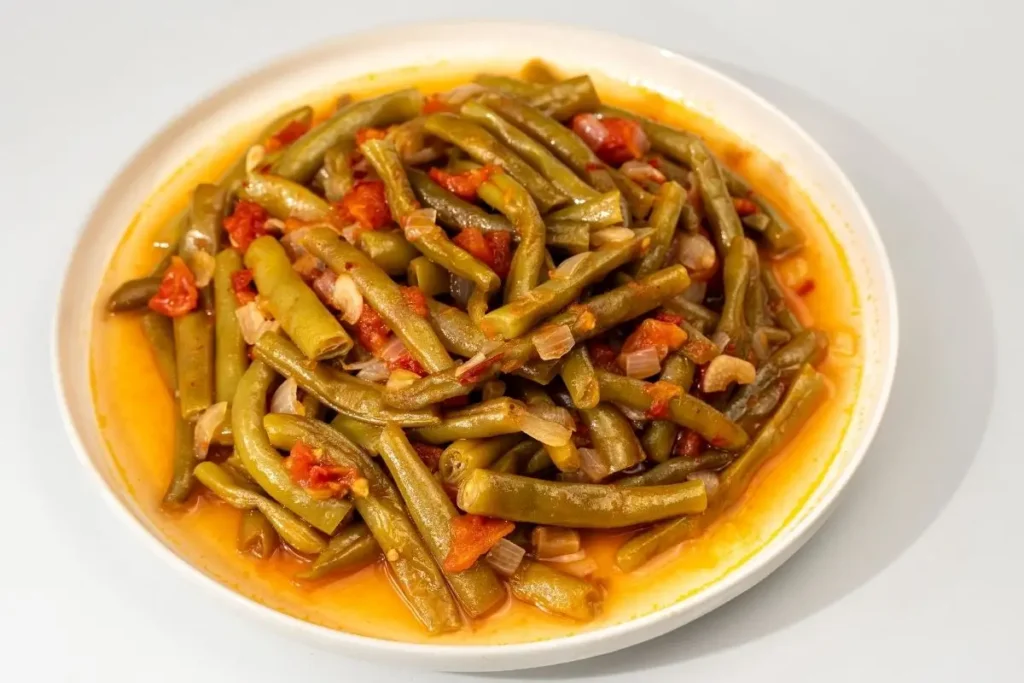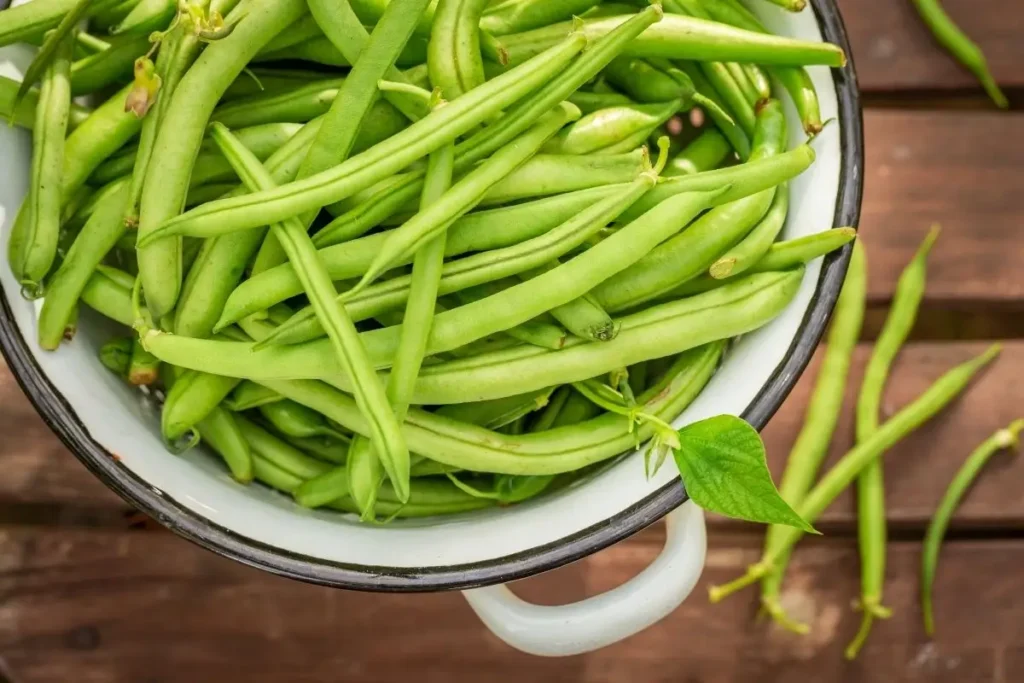Share on social media

Looking for the best way to cook green beans? Here’s the straight answer. This guide shows how to cook green beans by boiling, steaming, sautéing, roasting, grilling, air-frying (and microwave-steaming), with exact times, why each method works, how to keep beans bright and crisp-tender, and how to store and reheat safely.
If you’re more into eating than cooking (we get it 😄), you can always see what’s simmering in our kitchen; our menu is packed with Mediterranean classics that bring the same comfort and flavor as this dish, minus the dishes.
Key Takeaways

(Serves 4 as a side or light meal)
To serve with: rice pilaf, traditional hummus, baba ghanouj, warm pita.
Approx. Per serving, 4 servings (Based on 3 tablespoons olive oil and fresh tomatoes).
| Calories | 155 |
| Fat | 10 g |
| Carbs | 15 g |
| Fiber | 5 g |
| Protein | 3 g |

I’ll be honest; I’m not a big fan of adding plain sugar to green beans. As an American first, with Lebanese roots, living in Texas, I like to adjust this dish in two different ways that reflect both sides of who I am. These twists not only elevate the flavor, but they also make this a recipe that can compete with the best Lebanese green beans recipes and even stand out as an authentic Houston BBQ fusion dish.
Instead of sugar, I reach for pomegranate molasses—and the only brand I trust is Cortas. You can usually find it at Whole Foods or at any good Middle Eastern grocery store. The molasses adds a tangy-sweet depth that balances the tomatoes beautifully.
I also add a Maggi bouillon cube, which lends the sauce a subtle savoriness and roundness without overpowering the beans. This style keeps the dish vegan-friendly while giving it the unmistakable balance of a classic Lebanese green beans recipe with a Mediterranean flair.
Living in Houston, I couldn’t resist giving this dish a proper Lone Star makeover. First, I stir in a spoonful of La Costeña Chipotle Sauce for a smoky kick that Texans love. But the real twist? I take this vegetarian dish straight into barbecue country.
I’ll stop by a local spot in Montrose, Brook Street BBQ or The Pit Room, and pick up some burnt-end brisket. Tossed into the beans, the smoky, caramelized beef transforms humble Taze Fasulye into something I call Texas-Turkish Fasulye. It’s bold, hearty, and absolutely unforgettable, a dish that blends the roots of Mediterranean green beans with the soul of a Texas brisket recipe. (If you’re craving more budget-friendly flavor stops around town, check out this roundup of Houston’s best affordable restaurants; you might find your next BBQ fix.)
Just writing this makes me hungry. I can’t wait to make another batch, Texas-style. This variation proves that even a healthy Mediterranean side dish can evolve into a meaty, barbecue-inspired creation that feels right at home in Houston.
Green color comes from chlorophyll Acid (lemon, vinegar, tomato), and prolonged heat knocks magnesium out of the chlorophyll molecule, forming pheophytin (olive‑green). Solution: Cook beans fast and hot, and add acidic ingredients after cooking. Avoid “fixes” like baking soda; alkaline water keeps color but damages texture and can degrade thiamin (vitamin B1); not worth it.
4–5 minutes for crisp‑tender; 8–10 minutes for soft. If you boil, consider using the cooking liquid in soups or sauces to keep water‑soluble nutrients that leach out.
Use fresh or frozen for sautéing and roasting. Canned beans are fully cooked and softer; they’re better warmed gently or used in casseroles.
Cool quickly and store in a covered container in the fridge; use within 3–4 days for safety.
Skillet, medium heat, with a splash of water or broth, covered until hot; then uncover to evaporate excess. Ensure the center reaches 165°F / 74°C.
Yes—Monash lists ~15 beans (~75 g) as a low‑FODMAP green‑light serving. Larger amounts may introduce polyols and no longer be low‑FODMAP for some people.
No. Blanching for 2–3 minutes helps with large batches and sets the color, but you can skip it and finish with a quick covered steam in the pan. For freezing, blanch 3 minutes—that part isn’t optional for quality. Learn more about Home Food Preservation here.
Plan ¼ lb (115 g) per person for sides; ⅓ lb (150 g) for generous portions.
You might like it